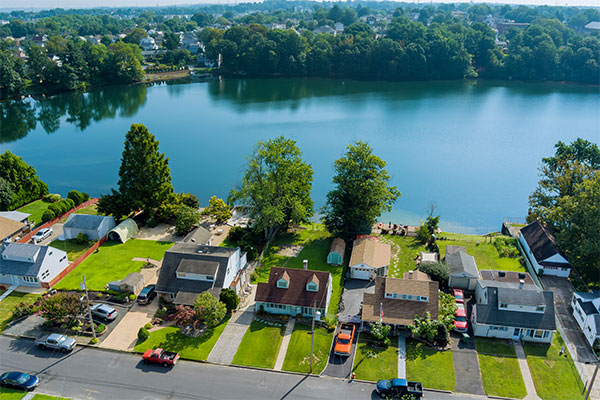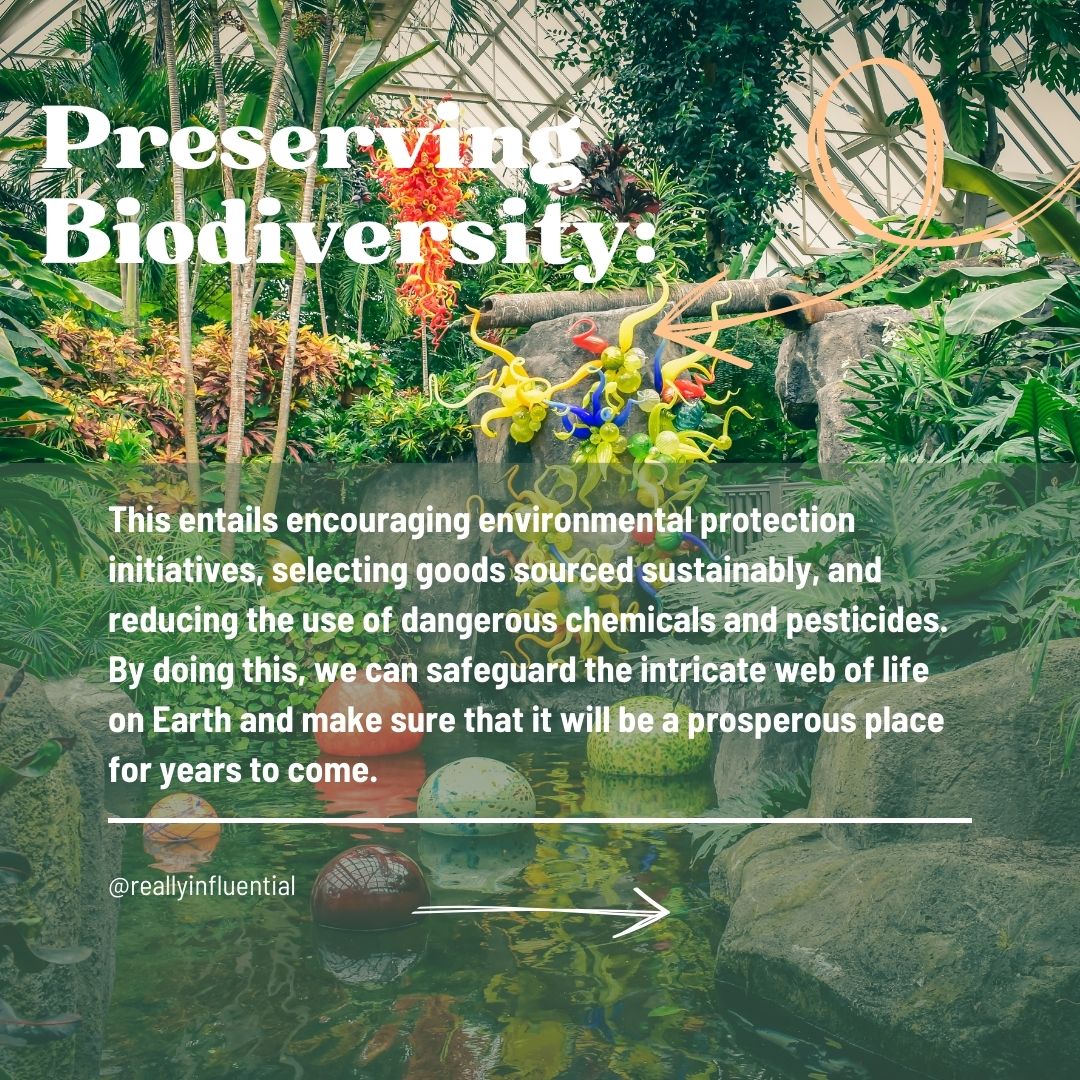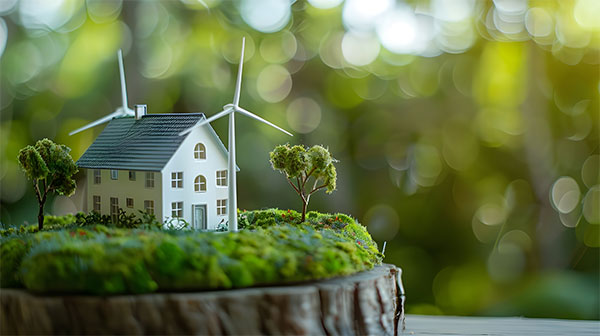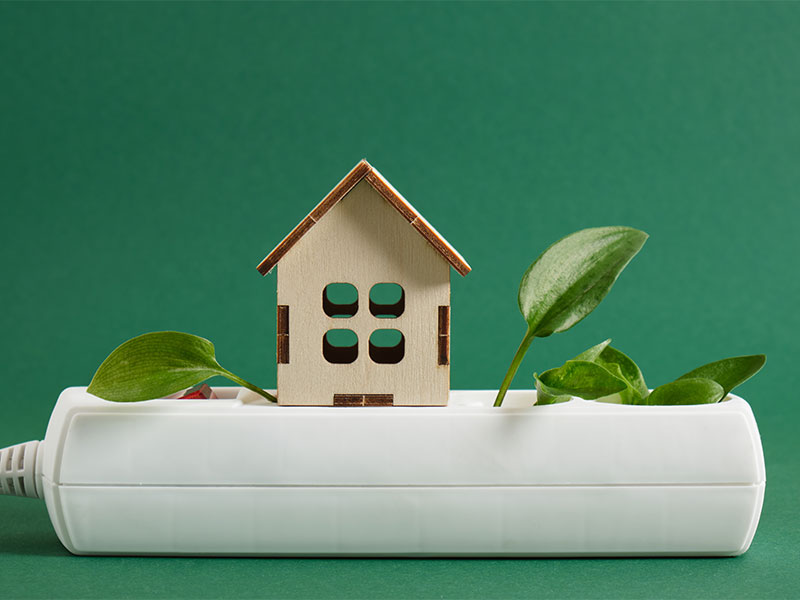Let’s be real—the Greater Toronto Area real estate market has always been competitive. But there’s a new player taking center stage, and it’s changing the game completely: eco-friendly homes in GTA. If you’re thinking about investing in real estate around Toronto, Mississauga, or anywhere in the GTA, you need to pay attention to this green revolution happening right now.
Gone are the days when “eco-friendly” meant sacrificing style or comfort. Today’s sustainable homes combine cutting-edge technology, stunning design, and serious cost savings—all while being better for the planet. And here’s the kicker: they’re not just good for your conscience; they’re exceptional for your wallet too.
Whether you’re a first-time homebuyer, a seasoned investor, or someone looking to upgrade, understanding the eco-friendly movement in GTA real estate isn’t optional anymore—it’s essential. These properties are appreciating faster, selling quicker, and attracting a growing demographic of environmentally conscious buyers who are willing to pay premium prices.
In this guide, we’ll break down everything you need to know about eco-friendly homes in GTA, from what makes them sustainable to why they’re becoming the hottest investment opportunity in Canadian real estate. Let’s dive in.
What Actually Makes a Home “Eco-Friendly”?
Beyond Solar Panels: Understanding Green Features
When most people think of eco-friendly, they picture solar panels on roofs. And sure, that’s part of it—but modern sustainable homes are way more sophisticated than that.
Eco-friendly homes in GTA typically include:
- Energy-efficient systems—High-efficiency HVAC systems, LED lighting, and smart thermostats that slash utility bills
- Superior insulation—triple-pane windows, proper sealing, and advanced insulation materials that keep heat in winter and out in summer
- Water conservation—low-flow fixtures, rainwater harvesting systems, and drought-resistant landscaping
- Sustainable materials—bamboo flooring, reclaimed wood, recycled steel, and non-toxic paints
- Renewable energy—solar panels, geothermal heating, or wind energy integration
- Smart home technology—automated systems that optimize energy usage based on occupancy and time of day
- Green roofs and walls—living roofs that provide insulation, manage stormwater, and improve air quality
The beauty of these features? They’re not just environmentally responsible—they directly impact your bottom line through reduced operating costs and increased property values.
Certification Programs That Matter
Not all “green” homes are created equal. Look for legitimate certifications when evaluating eco-friendly homes in GTA:
- LEED (Leadership in Energy and Environmental Design)—The gold standard for green building certification, with levels from Certified to Platinum. LEED homes meet strict standards for energy efficiency, water usage, and materials.
- ENERGY STAR—Homes certified by ENERGY STAR are at least 20% more energy-efficient than standard homes, verified by independent testing.
- Passive House—An ultra-rigorous standard focusing on extreme energy efficiency, requiring up to 90% less heating and cooling energy than conventional buildings.
- Net Zero—Homes that produce as much energy as they consume annually, essentially resulting in zero energy bills.
These certifications aren’t just fancy labels—they’re verified proof that the home delivers on its green promises. And they significantly impact resale value and buyer interest.
Why are Eco-Friendly Homes Dominating GTA Real Estate?

The Financial Case Is Airtight
Let’s talk money, because that’s what investing is about. Eco-friendly homes in GTA offer financial advantages that traditional properties simply can’t match.
- Lower operating costs—Homeowners typically save 30-50% on utility bills compared to conventional homes. We’re talking thousands of dollars annually. Over a 25-year mortgage, that’s potentially $100,000+ in savings.
- Higher resale values—Studies show certified green homes sell for 5-10% more than comparable non-certified properties. In GTA’s market, that premium translates to $50,000-$150,000 extra in your pocket when you sell.
- Faster sales—eco-friendly properties spend less time on the market. While average homes might sit for 30-45 days, green-certified homes often sell within 15-20 days, especially in hot markets like Toronto and Mississauga.
- Tax incentives and rebates—Federal and provincial programs offer significant rebates for energy-efficient upgrades and installations. The Canada Greener Homes Grant provides up to $5,000 for energy audits and improvements.
- Lower maintenance—Quality sustainable materials and systems typically require less maintenance and last longer than conventional alternatives, reducing long-term ownership costs.
For investors, the math is simple: higher rent potential (eco-conscious renters will pay premiums), lower vacancy rates, reduced operating costs, and superior appreciation. It’s not just good ethics—it’s smart business.
The Demographic Shift You Can’t Ignore
Here’s something that’ll blow your mind: millennials and Gen Z now represent the largest share of homebuyers in Canada. And guess what’s at the top of their priority list? Sustainability.
Recent surveys show that over 75% of buyers under 40 consider environmental impact when making real estate decisions. They’re not just willing to pay more for eco-friendly homes in GTA—they’re actively seeking them out and passing on conventional properties.
This isn’t a trend that’s going away. As climate change becomes more urgent and these demographics gain more buying power, the demand for sustainable housing will only intensify. Investing in eco-friendly properties now positions you ahead of this massive wave.
Climate Resilience Equals Investment Protection
Let’s get real about climate change for a second. Ontario is experiencing more extreme weather—brutal winters, intense summer heat, flooding events, and storms. Traditional homes are vulnerable; eco-friendly homes are built to handle it.
Features like superior insulation, advanced drainage systems, flood-resistant materials, and resilient design mean these properties maintain value even as climate challenges intensify. Insurance companies are taking notice, too, often offering lower premiums for certified green homes due to reduced risk.
When you invest in eco-friendly homes in GTA, you’re not just buying property—you’re buying climate insurance for your investment portfolio.

Where to Find Eco-Friendly Homes in GTA?
Toronto’s Green Neighborhoods
Toronto has embraced sustainable development more aggressively than most Canadian cities, creating pockets where eco-friendly living thrives.
- The Distillery District—Known for LEED-certified condos and heritage buildings retrofitted with modern sustainable systems. High walkability scores reduce car dependency.
- The Junction—increasingly popular for eco-renovations and new sustainable infill developments. Strong community focus on environmental initiatives.
- Leslieville – Attracts environmentally conscious professionals. Many Victorian homes have been beautifully renovated with green technologies while maintaining character.
- Corktown—Emerging neighborhood with new eco-friendly condo developments targeting young professionals, prioritizing sustainability.
- Waterfront Communities—Multiple LEED-certified towers with green roofs, energy-efficient systems, and proximity to transit, reducing transportation emissions.
If you’re serious about finding the perfect eco-friendly property in Toronto’s competitive market, working with experienced realtors in Toronto who specialize in sustainable properties makes all the difference. These professionals understand green certifications, can identify authentic eco-features versus greenwashing, know which neighborhoods are truly committed to sustainability, and have insider access to new green developments before they hit the market. Their expertise helps you avoid costly mistakes while finding properties that align with both your environmental values and investment goals.

Mississauga’s Sustainable Developments
Mississauga is rapidly evolving from suburban sprawl to a city embracing sustainable urban planning and green building practices.
- Port Credit—Waterfront area with new sustainable condo developments and eco-renovated heritage homes. Excellent walkability and transit access.
- Lakeview Village—A massive redevelopment project transforming former industrial land into one of Canada’s largest sustainable communities. Features renewable energy, green infrastructure, and pedestrian-focused design.
- City Centre—Multiple LEED-certified buildings around Square One. Dense, transit-oriented development reduces car dependency.
- Streetsville—Historic village character with an increasing number of green renovations and sustainable new builds.
- Erin Mills—Newer developments incorporating energy-efficient designs and sustainable community planning.
Mississauga’s commitment to environmental initiatives, including ambitious emission reduction targets and green infrastructure investments, makes it increasingly attractive for eco-conscious investors.
Emerging Green Communities Beyond the Core
- Oakville—High-end market with luxury eco-homes featuring cutting-edge sustainable technology. Strong environmental bylaws encourage green building.
- Burlington—A growing number of Passive House developments and LEED-certified condos. Beautiful waterfront with an environmental conservation focus.
- Richmond Hill—Sustainable master-planned communities targeting families seeking suburban green living with urban amenities.
- Markham—a tech-focused city embracing smart home technology and sustainable development. Several net-zero-ready communities.
These areas offer opportunities for investors seeking appreciation potential as these communities mature and green features become standard expectations rather than premium options.
Green home upgrades the boost resale value
Key Features to Look for When Investing
1. Energy Systems That Actually Deliver
Not all “energy-efficient” claims hold up under scrutiny. Here’s what to look for:
- Geothermal heating and cooling—Initial investment is higher, but operational savings are massive. These systems use stable underground temperatures, slashing heating and cooling costs by 40-60%.
- Solar PV systems—Check the age, capacity, and warranty. Well-designed systems can eliminate electricity bills entirely and even generate income through Ontario’s net metering program.
- High-efficiency HVAC—Look for ENERGY STAR certified systems with SEER ratings of 16 or higher for cooling and AFUE ratings above 95% for heating.
- Smart energy management—systems that learn usage patterns and optimize energy consumption automatically provide ongoing savings without requiring homeowner intervention.
Ask for utility bills from current owners. Real data beats promises every time.
2. Water Management Features
Water efficiency might not sound sexy, but it impacts operating costs significantly and increasingly matters to environmentally conscious buyers.
- Low-flow fixtures—Modern low-flow toilets, showerheads, and faucets reduce water usage by 30-50% without sacrificing performance.
- Rainwater harvesting—systems collecting rainwater for irrigation, toilet flushing, or even potable use after treatment. Reduces municipal water demand and costs.
- Greywater recycling—captures water from sinks, showers, and laundry for reuse in irrigation or toilet flushing.
- Drought-resistant landscaping – Native plants requiring minimal watering reduce both water bills and maintenance needs.
With water costs rising and climate-related water concerns increasing, these features add measurable value.
3. Building Envelope and Air Quality
This is where many older homes fall short, even if they’ve added solar panels or other green features.
- Superior insulation—Check for spray foam insulation, upgraded attic insulation (R-60 or higher), and insulated foundation walls. Poor insulation undermines all other efficiency features.
- Air sealing—Properly sealed homes prevent energy loss through gaps and cracks. Look for blower door test results showing minimal air leakage.
- Triple-pane windows—a massive improvement over double-pane in energy retention. Look for low-E coatings and argon or krypton gas filling.
- Heat recovery ventilation (HRV) – Brings fresh air in while capturing heat from outgoing air, maintaining air quality without energy loss.
- Non-toxic materials – Low-VOC paints, formaldehyde-free insulation, and natural materials improve indoor air quality, increasingly important as people spend more time at home.
These features aren’t just about energy savings—they directly impact comfort, health, and livability, which translates to higher tenant satisfaction and property values.

The Investment Strategy for Eco-Friendly Properties
1. Buy Now or Wait? (Spoiler: Buy Now)
Some investors wonder if they should wait until eco-friendly technology becomes cheaper or more widespread. Here’s why that’s the wrong strategy:
- First-mover advantage – Early adopters in the eco-friendly space are already seeing superior returns. Waiting means watching opportunities pass.
- Price appreciation outpacing market – Green-certified homes are appreciating 2-3% faster annually than conventional properties in GTA. Delaying means missing that differential growth.
- Regulatory trends – Building codes are continuously tightening energy requirements. Homes already meeting or exceeding these standards won’t face costly retrofit requirements.
- Tenant/buyer demand—The demographic shift toward sustainability isn’t reversing. Properties without eco-features will increasingly struggle to compete.
Yes, eco-friendly homes in GTA might have slightly higher purchase prices today. But their total cost of ownership is lower, appreciation is faster, and demand is stronger. The question isn’t whether to invest in sustainable properties—it’s how quickly you can get positioned.
2. Renovation vs. New Build: Which Makes Sense?
Both approaches can work, depending on your goals and budget.
Eco-renovating existing properties:
Pros:
- Often more affordable upfront than buying new green construction
- Can create significant value through strategic upgrades
- Maintains character in desirable established neighborhoods
- May qualify for renovation grants and incentives
Cons:
- Difficult to achieve the highest certification levels in older building stock
- May encounter unexpected issues during renovation
- ROI varies depending on the extent of upgrades
- Longer timeline to complete
Buying new eco-friendly construction:
Pros:
- Certified performance from day one
- Warranties on systems and construction
- Latest technology and design
- Immediate rental or resale potential
Cons:
- Higher purchase price
- Limited inventory in some areas
- Less character than renovated heritage properties
- Potentially longer wait for pre-construction projects
For most investors, new construction or recently built certified properties offer the best risk-adjusted returns. But strategic eco-renovations in desirable neighborhoods can create exceptional value for hands-on investors willing to manage projects.
3. Financing Green: Programs and Incentives
One advantage of eco-friendly homes in GTA? Multiple programs specifically support green property investment.
- Canada Greener Homes Grant—Up to $5,000 for energy audits and efficiency upgrades. Additional grants are available for specific improvements like insulation or heat pumps.
- Energy-efficient mortgage programs—Some lenders offer better rates or higher loan-to-value ratios for certified green homes, recognizing lower operating costs and default risk.
- Property tax incentives – Some GTA municipalities offer property tax reductions or rebates for homes meeting certain green standards.
- Utility rebates – Toronto Hydro, Enbridge, and other utilities offer rebates for energy-efficient appliances, HVAC systems, and insulation upgrades.
- Federal home renovation tax credits – Various credits available for energy-efficient improvements, particularly for multi-generational renovations including accessibility and efficiency upgrades.
Work with mortgage brokers familiar with green financing options. The right financing structure can significantly improve your investment returns.
Common Myths About Eco-Friendly Homes (Let’s Bust Them)
1. “They’re Too Expensive”
This is the most common misconception, and it’s based on outdated information. Yes, eco-friendly homes in GTA might have purchase prices 3-5% higher than comparable conventional properties. But here’s what people miss:
- Lower utility costs recover the premium within 5-7 years
- Higher resale values more than compensate for the initial cost
- Tax incentives and rebates reduce the effective purchase price
- Lower maintenance costs over the property’s lifetime
- Premium rents if you’re investing for income
When you calculate the total cost of ownership over 10-20 years, eco-friendly properties are actually cheaper to own. The “expensive” narrative ignores the complete financial picture.
2. “The Technology Is Unreliable”
Maybe in 1995. Today’s green technology is proven, reliable, and backed by substantial warranties. Solar panels typically carry 25-year warranties. Geothermal systems last 50+ years for ground loops and 20+ years for heat pumps. Heat recovery ventilators require minimal maintenance.
Modern eco-friendly features are often more reliable than conventional systems because they’re newer technology designed with efficiency and durability in mind. Plus, they have fewer moving parts and lower operational stress.
3. “Green Homes Look Weird or Uncomfortable”
Have you actually seen modern eco-friendly homes in the GTA lately? They’re stunning. Architects and designers have fully embraced sustainability without sacrificing aesthetics—in fact, many of the most beautiful homes in the GTA are LEED-certified or Passive House standard.
Floor-to-ceiling windows (triple-pane, obviously), open concepts, natural materials, and smart home integration create spaces that are both gorgeous and functional. The idea that eco-friendly means ugly or uncomfortable is completely disconnected from reality.
4. “It’s Just Greenwashing”
There’s definitely some greenwashing in real estate—properties claiming to be “eco-friendly” based on a few token features. That’s why certifications matter. LEED, Passive House, ENERGY STAR, and Net Zero certifications involve independent verification and strict standards.
Don’t just trust marketing claims. Ask for certification documentation, utility bills, and specifications. Real eco-friendly homes in the GTA have verifiable credentials proving their performance.
Working With the Right Professionals

Why Specialized Knowledge Matters?
Investing in eco-friendly properties requires understanding unique considerations that traditional real estate transactions don’t involve. Not all real estate professionals have this expertise.
When searching for properties in Mississauga’s rapidly expanding sustainable communities, partnering with knowledgeable realtors in Mississauga who understand green building standards, local eco-initiatives, and emerging sustainable developments is crucial. These specialists can navigate complex certification systems, assess whether green features justify asking prices, connect you with green-certified inspectors and contractors, and identify upcoming sustainable developments before they become widely known. Their specialized knowledge protects your investment while ensuring you maximize both environmental impact and financial returns.
Building Your Green Investment Team
Beyond realtors, assemble a team understanding eco-friendly properties:
- Green home inspectors – Standard inspectors might miss issues specific to sustainable systems. Hire inspectors certified in green building assessment.
- Energy auditors—Professional energy audits identify efficiency opportunities and verify the claimed performance of existing systems.
- Green contractors—For renovations, work with contractors experienced in sustainable building practices and familiar with local green building codes.
- Mortgage brokers with green expertise—they know which lenders offer the best terms for eco-friendly properties and which programs you qualify for.
- Environmental consultants—For larger projects, consultants can advise on achieving certifications, optimizing systems, and maximizing available incentives.
The right team doesn’t cost you money—they save you money by avoiding mistakes and identifying opportunities you’d otherwise miss.
The Future Is Already Here
What’s Coming Next in GTA Green Real Estate?
The eco-friendly movement isn’t slowing down—it’s accelerating. Here’s what’s on the horizon:
- Net-zero communities—entire neighborhoods designed to produce as much energy as they consume. Several are already in development across GTA.
- Carbon-neutral buildings—Beyond operational emissions, a new focus on embodied carbon in materials and construction processes.
- Enhanced building codes—Ontario is progressively tightening energy requirements. By 2030, net-zero-ready will likely be the minimum standard for new construction.
- Smart grid integration—homes that don’t just consume less energy but actively participate in grid management, potentially generating income.
- Circular economy principles—buildings designed for disassembly and material reuse, eliminating construction waste.
- Extreme weather resilience—features like flood resistance, heat island mitigation, and storm hardening are becoming standard rather than premium additions.
Investors positioning themselves in eco-friendly homes in the GTA now are getting ahead of these inevitable shifts rather than scrambling to catch up later.
time to buy real estate in Canada
The Bottom Line for Investors
Let’s bring this full circle. Eco-friendly homes in GTA represent the convergence of environmental necessity, demographic preferences, regulatory trends, and financial advantages. They’re not a niche market anymore—they’re becoming the market.
Whether you’re buying your first property or adding to an extensive portfolio, ignoring the sustainable revolution in real estate is leaving money on the table. The data is clear: these properties appreciate faster, rent for more, sell quicker, and cost less to operate.
The GTA real estate market has always rewarded those who anticipate trends rather than follow them. Eco-friendly properties aren’t the future—they’re the present. The question is whether you’ll be among the investors benefiting from this transformation or watching from the sidelines wishing you’d acted sooner.
Frequently Asked Questions
Q1: Are eco-friendly homes in the GTA really worth the investment premium?
Absolutely. While eco-friendly properties might cost 3-5% more upfront, they appreciate 2-3% faster annually, save $3,000-$7,000 yearly in operating costs, and command premium rents. Over a typical 10-year investment horizon, the total return significantly exceeds conventional properties. Plus, you’re future-proofing against increasingly strict building codes and changing buyer preferences. The “premium” is actually an investment in lower operating costs and higher resale values.
Q2: Can I retrofit an existing property to be eco-friendly, or should I only buy new construction?
Both strategies work. New construction offers certified performance from day one with warranties and the latest technology. Retrofitting can create substantial value, particularly in desirable established neighborhoods where new eco-construction is limited. The key is doing retrofits comprehensively—piecemeal improvements rarely achieve certification levels or maximize ROI. Focus on building envelope first (insulation, windows, air sealing), then systems (HVAC, water heating), then renewables (solar). Strategic retrofits can achieve impressive certifications and value creation.
Q3: How do I verify a property is genuinely eco-friendly and not just greenwashing?
Demand documentation. Legitimate eco-friendly homes have third-party certifications (LEED, ENERGY STAR, Passive House, Net Zero), energy audit reports, utility bills proving efficiency claims, and specifications for all green features. Be skeptical of vague marketing claims without verification. Hire green-certified inspectors who understand sustainable systems. Request EnerGuide ratings. Real eco-friendly properties have paper trails proving performance—if sellers can’t provide documentation, consider it a red flag.
Q4: What’s the typical ROI timeline for eco-friendly home investments in the GTA?
The initial purchase premium (if any) typically recovers through utility savings alone in 5-7 years. However, smart investors look at total return. Eco-friendly homes in the GTA appreciate faster from day one, command higher rents (if investment properties), and sell quicker with less price negotiation. Many investors see positive differential returns within 2-3 years when accounting for all factors. Long-term (10+ years), the ROI advantage compounds significantly. Plus, as building codes tighten, properties already exceeding standards avoid costly retrofit requirements.
Q5: Are there specific GTA neighborhoods where eco-friendly homes are the best investments?
Toronto’s Distillery District, Junction, and Waterfront Communities offer strong eco-friendly options with high walkability and appreciation. Mississauga’s Lakeview Village and Port Credit are emerging sustainable hotspots. Oakville and Burlington attract premium eco-conscious buyers. However, the best investment depends on your strategy, budget, and timeline. Work with realtors specializing in sustainable properties who understand micro-market dynamics. Sometimes the best opportunities are in transitioning neighborhoods where you’re ahead of gentrification and increasing environmental consciousness.
Conclusion: Your Move in the Green Revolution
So here we are. You now understand why eco-friendly homes in GTA aren’t just good for the planet—they’re exceptional for your investment portfolio. You know what features actually matter, where to find these properties, how to verify their credentials, and why waiting is a mistake.
The Greater Toronto Area real estate market is transforming before our eyes. Climate change isn’t a distant threat—it’s a present reality shaping buyer preferences, building codes, and property values. Demographic shifts toward younger, environmentally conscious buyers are accelerating. Regulatory trends are tightening. Financial incentives are expanding.
Every trend points in the same direction: eco-friendly properties will continue outperforming conventional real estate across every metric that matters—appreciation, rental income, operating costs, and resale ease.
The investors who recognize this now and position themselves accordingly will reap rewards for years to come. Those who dismiss sustainable real estate as a passing trend or niche market will find themselves holding depreciating assets in a market that’s moved beyond them.
You don’t need to save the world to invest in eco-friendly homes in GTA—though that’s a nice bonus. You just need to recognize a smart financial strategy when you see it. And this is it. The data doesn’t lie. The trends are clear. The opportunity is now.
Whether you’re buying your first property or your fiftieth, make sure sustainability is part of your investment criteria. Your future self—and your bank account—will thank you.
The future of GTA real estate is green. The question is: are you in?

